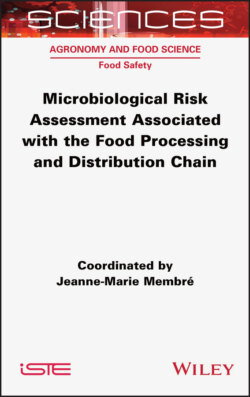Читать книгу Microbiological Risk Assessment Associated with the Food Processing and Distribution Chain - Jeanne-Marie Membre - Страница 28
1.7. Conclusion and perspective
ОглавлениеHazard identification is, and will remain, an essential step in food safety. The work of hazard identification requires cross-referencing different types of knowledge and information:
– knowledge of the product and its processes, provided in particular by field expertise;
– knowledge of consumer practices, provided in particular by surveys, in addition to labeling, which indicates the main trends;
– knowledge of microbial behavior provided by previous studies from the scientific literature, hazard factsheets prepared by health safety agencies, forecasting models, etc.;
– epidemiological data including surveillance data on prevalence and concentrations, withdrawals/recalls indicated by early warning systems, reports of toxi-infections at the country level, public health data, etc.
This entails a substantial amount of research work, as well as, above all, documentary work. This work should be assigned to a highly qualified team with proven skills in food microbiology.
Several avenues of research in hazard identification can be envisaged for the future. One, which is not new as such but which will definitely take on importance, is the early identification of emerging hazards constrained by change. Kleter and Marvin (2009) have proposed three types of constraints classified as those related to changes in the environment, in the production methods (processes and formulations) of the food and in the food preferences of consumers.
The environment is changing, especially under the influence of climate change, which will affect the emergence and persistence of bacteria, viruses, parasites, harmful algae, fungi, etc. The WHO is expecting projected climate change to negatively impact on food safety, especially in low- and middle-income countries (WHO 2019). Even in Europe, climate change will have consequences for food safety. For example, a recent review focusing on microbial risks in the dairy industry (Feliciano et al. 2020) pointed out that raw milk is sensitive to climate change, as its quality can be affected by fluctuations in ambient temperature and the amount of rainfall. Climate change can induce microbiota changes and stress in lactating cows, with a risk of increasing their vulnerability to microbial infections and consequently higher microbial contamination of milk.
Under its Food 2030 agenda, the European Union considers food safety as part of a food system including nutrition, climate, circularity (resource efficiency) and innovation (empowering communities) (European Commission 2016). In the EU, there are societal expectations for sustainable food production, especially in terms of food safety and quality and also environmental and animal welfare standards (European Commission 2016). This much more general integration of food safety in a study of a complete food system (from new cultivation methods to consumer expectations) opens up perspectives in risk assessment which are taken up again in the Conclusion of this book. This is also important to take into account when identifying hazards since it can lead to the emergence or re-emergence of new hazards: new ingredients, new combinations of ingredients, new cooking calculations, new processes, etc.
Regarding consumer food preferences, a recent report in the Sénat (Cartron and Fichet 2020) pointed to a boom in France in organic and sustainable agricultural production methods. The turnover from organic food has multiplied by 10 in 20 years, with an acceleration since the early 2010s. Likewise, the consumer is turning to locally sourced products. ANSES (2017b) has flagged up other changes in the eating practices of French consumers; for example, they are tending to eat more raw products, consume seeds or nuts on a regular basis and cut back on dairy products and replace them with soy products. These practices are followed in the best of faith, but may present certain health risks. A recent study conducted at INRAE (Eygue et al. 2020) has shown that these new practices generate a wide variety of hazards, such as bacteria, parasites, mycotoxins, allergens and chemical compounds, which are potentially linked to a wide range of health impacts, such as food poisoning, anaphylaxis, cancer, immunosuppression and endocrine disorders.
Hazard identification is therefore a “never-ending story”. It must be reviewed and augmented regularly on the basis of new knowledge and new tools made available to the scientific community and must take into account the perpetual changes in the environment and in the production and consumption of food products.
